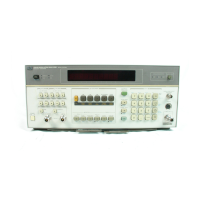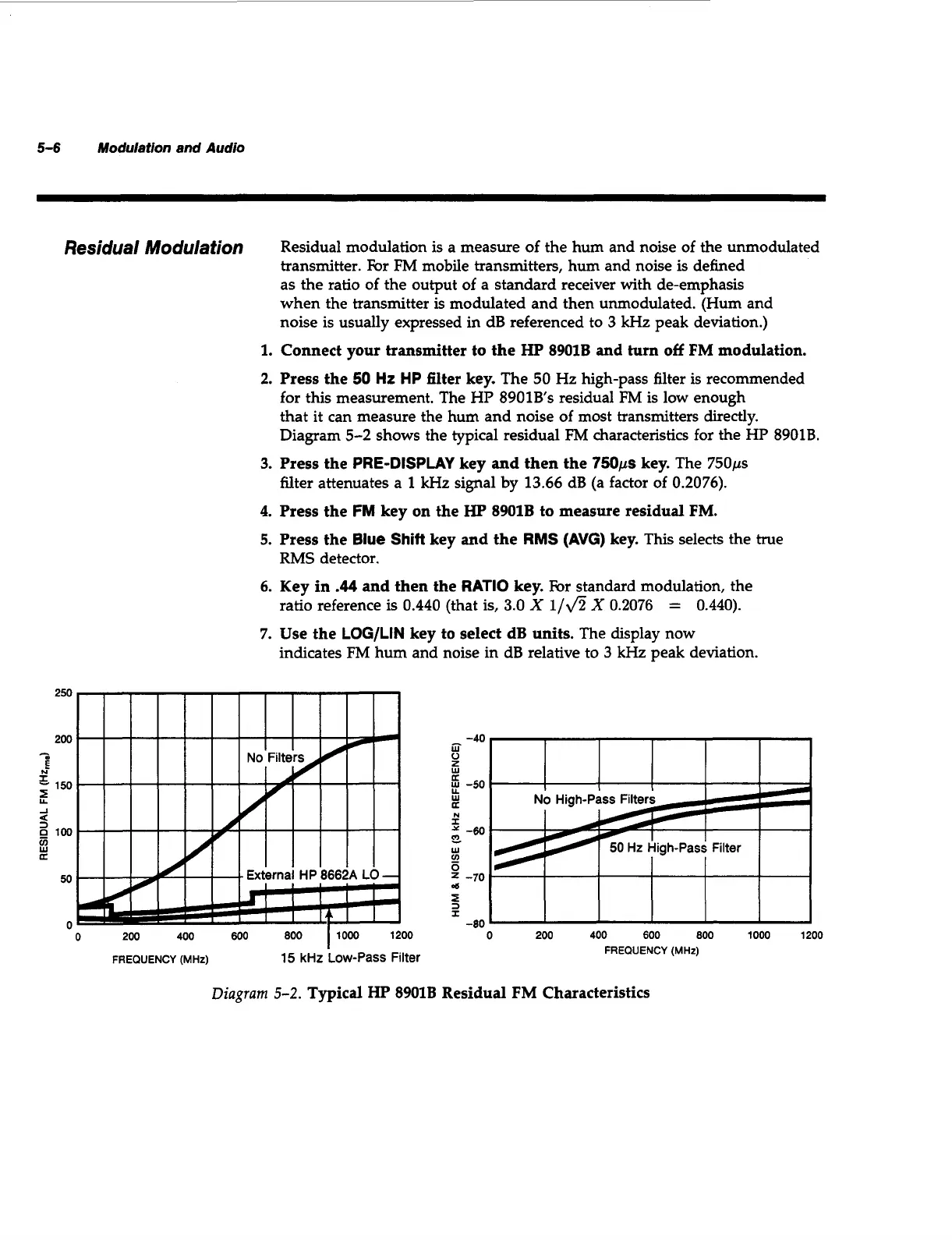5-6
Modulation and Audio
Residual Modulation
Residual modulation is a measure of the hum and noise of the unmodulated
transmitter. For FM mobile transmitters, hum and noise is defined
as the ratio of the output of a standard receiver with de-emphasis
when the transmitter
is
modulated and then unmodulated. (Hum and
noise is usually expressed in
dB
referenced to
3
kHz
peak deviation.)
1.
Connect your transmitter to the
Hp
8901B and turn
off
FM
modulation.
2.
Press the
50
Hr HP
filter key. The
50
Hz high-pass filter is recommended
for this measurement. The HP 8901B's residual
FM
is low enough
that it can measure the hum and noise of most transmitters directly.
Diagram 5-2 shows the typical residual
FM
characteristics for the HP
8901B.
3.
Press the
PRE-DISPLAY
key and then the
750ps
key. The 75011s
filter attenuates a
1
kHz
signal by 13.66
dB
(a factor of 0.2076).
4.
Press the
FM
key on the
HP
8901B to measure residual
FM.
5.
Press the
Blue
Shift
key and the
RMS
(AVG)
key. This selects the true
6.
Key in
.44
and then the
RATIO
key. For standard modulation, the
7.
Use the
LOG/LIN
key to select dB units. The display now
RMS
detector.
ratio reference
is
0.440
(that is,
3.0
X
l/fi
X
0.2076
indicates FM hum and noise in dB relative to
3
kHz peak deviation.
=
0.440).
-40
w^
a
a
P
0
z
Y
-50
w
-60
-
w
;
4
2
-70
I
-an
I"
0
200
400
600
800
I
1000 1200
0
200
400
600
800
1000
1200
FREQUENCY
(MHz)
FREQUENCY
(MHz)
15
kHz
Low-Pass
Filter
Diagram
5-2.
Typical HP 8901B Residual
FM
Characteristics

